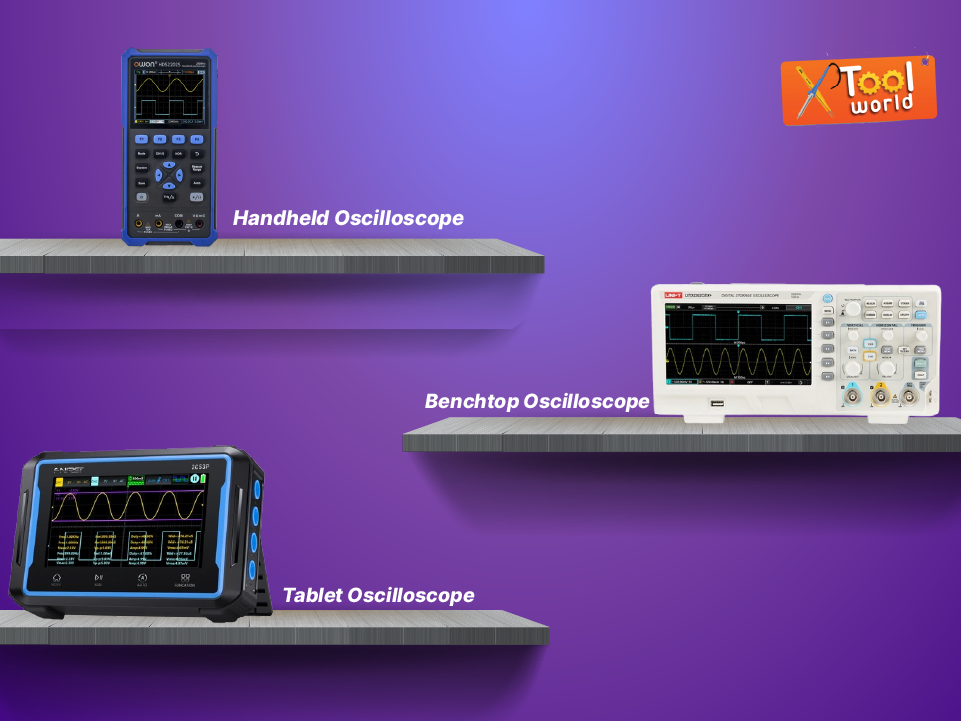
An oscilloscope is an essential tool for anyone working with electronics, enabling you to visualize electrical signals, measure voltage, and troubleshoot circuits. Whether you’re a hobbyist, an engineer, or a technician, choosing the right oscilloscope can make a huge difference in the accuracy and efficiency of your work. With so many models on the market, each with varying features and specifications, it can be overwhelming to make a decision.
In this guide, we’ll break down the key factors you should consider when selecting an oscilloscope, helping you make an informed choice based on your specific needs.
1. Understand Your Requirements
Before diving into the technical aspects of an oscilloscope, it’s crucial to understand what you'll be using it for. Consider the following:
Once you’ve defined your primary use cases, you’ll have a clearer idea of the specifications to focus on.
2. Key Specifications to Consider
Bandwidth
Bandwidth is arguably the most critical specification when selecting an oscilloscope. It refers to the range of frequencies the oscilloscope can accurately measure. A general rule of thumb is to choose an oscilloscope with a bandwidth at least 5 times higher than the highest frequency of the signals you plan to measure.
Sample Rate
The sample rate determines how frequently the oscilloscope captures data points from the input signal. The higher the sample rate, the more accurate the signal representation will be.
Number of Channels
Oscilloscopes are available with 2-channel, 4-channel, and even 8-channel configurations. More channels allow you to monitor multiple signals simultaneously, which can be particularly useful in debugging multi-component systems.
Memory Depth
Memory depth defines how much data the oscilloscope can store. A higher memory depth allows the oscilloscope to capture longer time windows or high-resolution signal traces without missing critical details.
Display and Resolution
A large, high-resolution display makes it easier to interpret signals. Look for oscilloscopes with at least 640x480 resolution or higher. A larger display can improve visibility and reduce eye strain, especially when working with multiple signals.
3. Types of Oscilloscopes
Analog Oscilloscopes
Analog oscilloscopes are the traditional choice and are still favored for specific applications like audio signal analysis due to their smooth waveform display.
Digital Oscilloscopes (DSO)
Digital oscilloscopes are by far the most popular today, offering versatile features like signal storage, advanced analysis, and digital data export.
Mixed Signal Oscilloscopes (MSO)
Mixed Signal Oscilloscopes combine standard oscilloscope functionality with a logic analyzer, allowing you to view both analog and digital signals simultaneously.
PC-Based Oscilloscopes
PC-based oscilloscopes are connected to a computer via USB or Ethernet, using the PC’s processing power and display to analyze signals.
4. Advanced Features to Look For
Automated Measurements
Many modern oscilloscopes offer built-in measurement tools, such as peak voltage, rise time, and frequency. These features can save time and improve accuracy, especially for repetitive tasks.
Triggering Options
Triggering controls are vital for capturing specific parts of a signal. Look for oscilloscopes with a variety of trigger modes, such as edge triggering, pulse width triggering, or video triggering. This ensures you can capture even complex signals reliably.
Connectivity Options
Modern oscilloscopes often include USB ports, Ethernet, and even Wi-Fi connectivity, allowing you to export data, control the oscilloscope remotely, or integrate it into larger test setups.
Probes and Accessories
The quality of your measurements also depends on the probes you use. Some oscilloscopes come with standard probes, while others may require purchasing specialized probes, such as high-voltage or current probes. Always ensure that the probes match the oscilloscope’s bandwidth and signal requirements.
5. Budget Considerations
Your budget will play a significant role in your decision. Entry-level oscilloscopes are affordable, ranging from 10,000 to 25,000 for hobbyists and students. Professional-grade oscilloscopes with higher bandwidth and advanced features can cost anywhere from Rs 30,000 to Rs 1,00,0000 or more.
Tips for Buying Within Your Budget:
Top Oscilloscope Brands to Consider
When selecting an oscilloscope, it’s important to choose a trusted brand known for reliability, support, and accuracy. Here are some top brands:
Conclusion
Choosing the right oscilloscope depends on your specific needs, such as the signals you’ll measure, your budget, and the features you require. By understanding the key specifications—such as bandwidth, sample rate, and memory depth—you can confidently select a model that meets your requirements. Whether you're a hobbyist or a professional, the right oscilloscope can make all the difference in your work.
For more information on oscilloscopes, their accessories, and purchasing options, visit www.toolworld.in, where you'll find a wide selection of top brands to help you succeed in your next project.